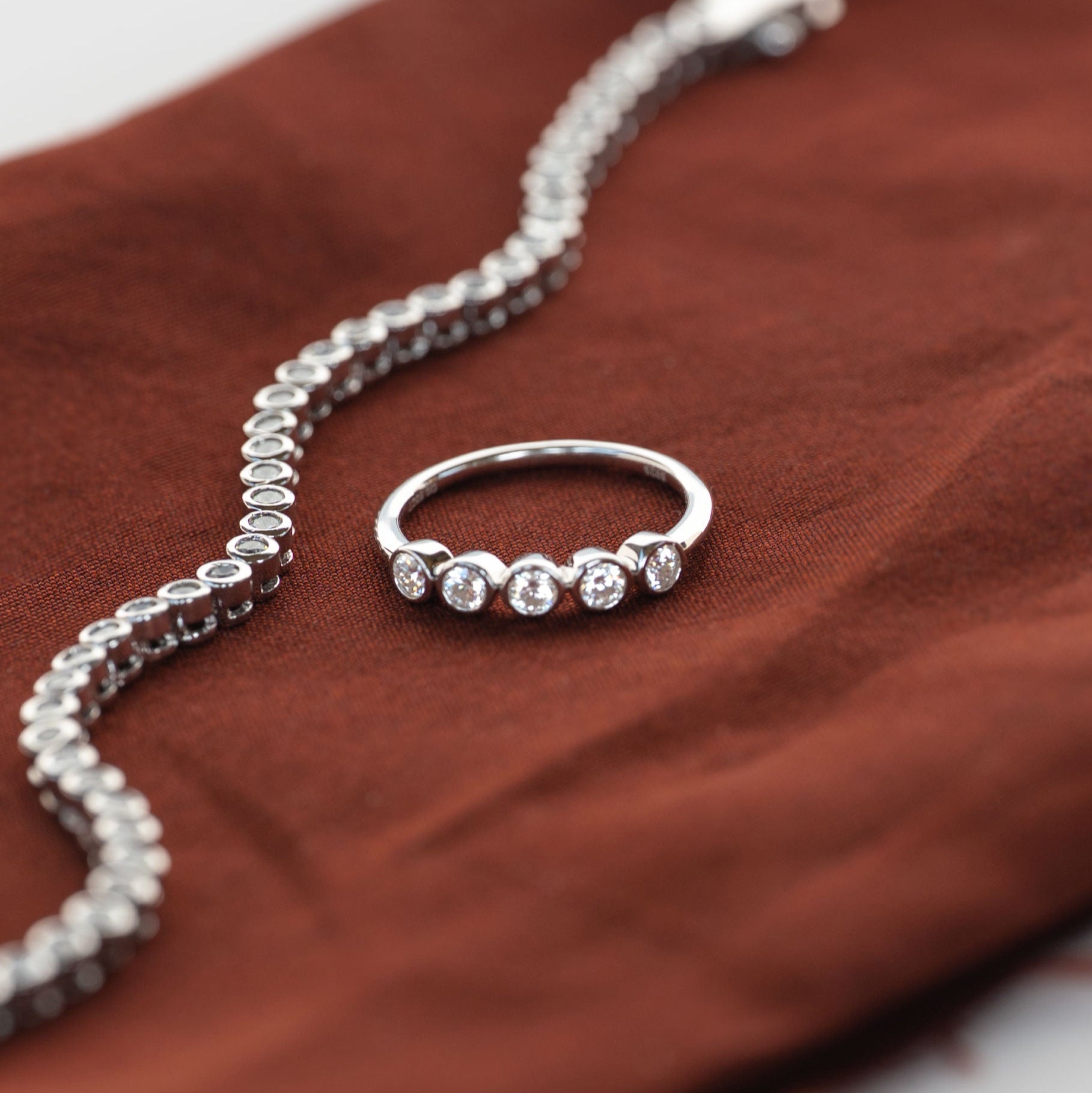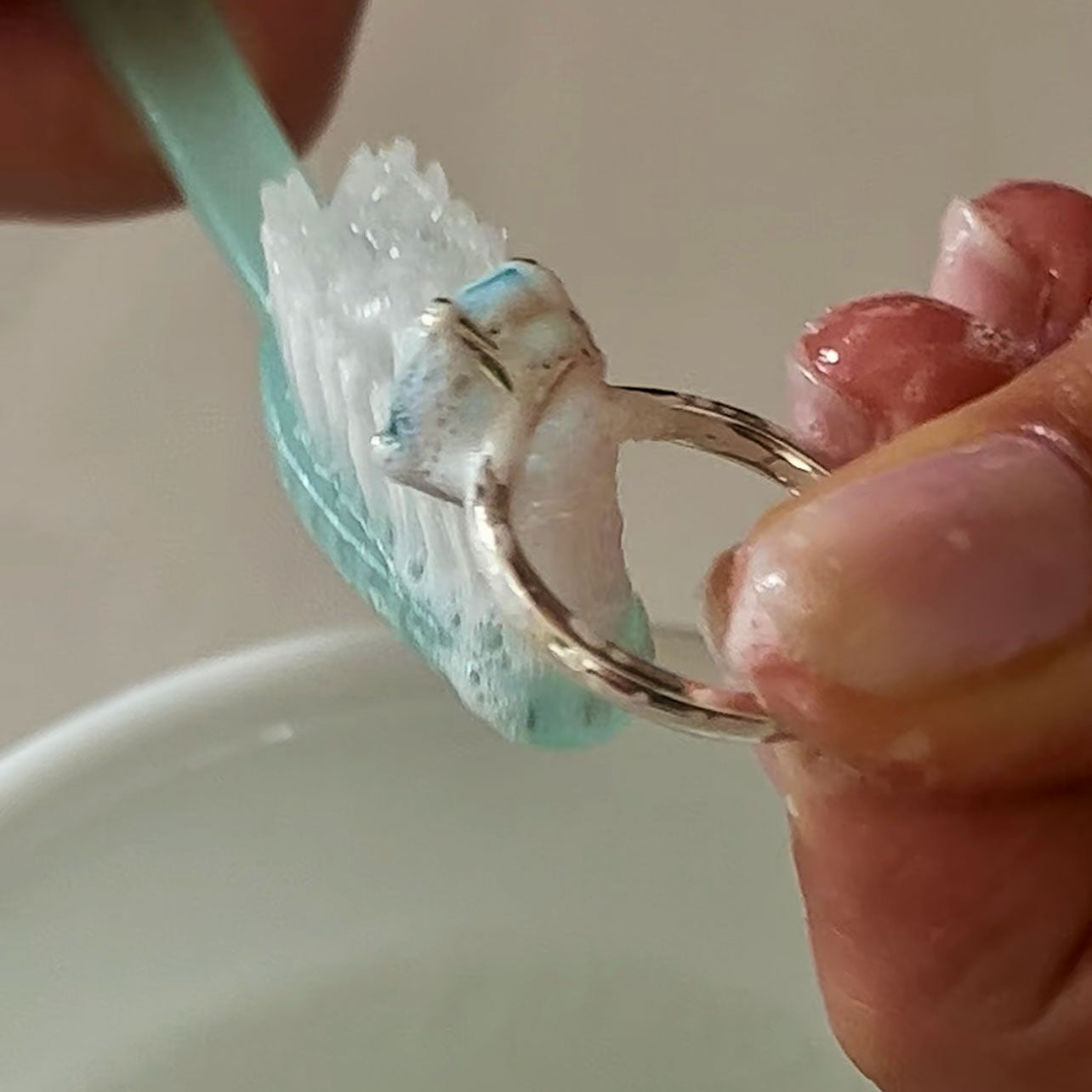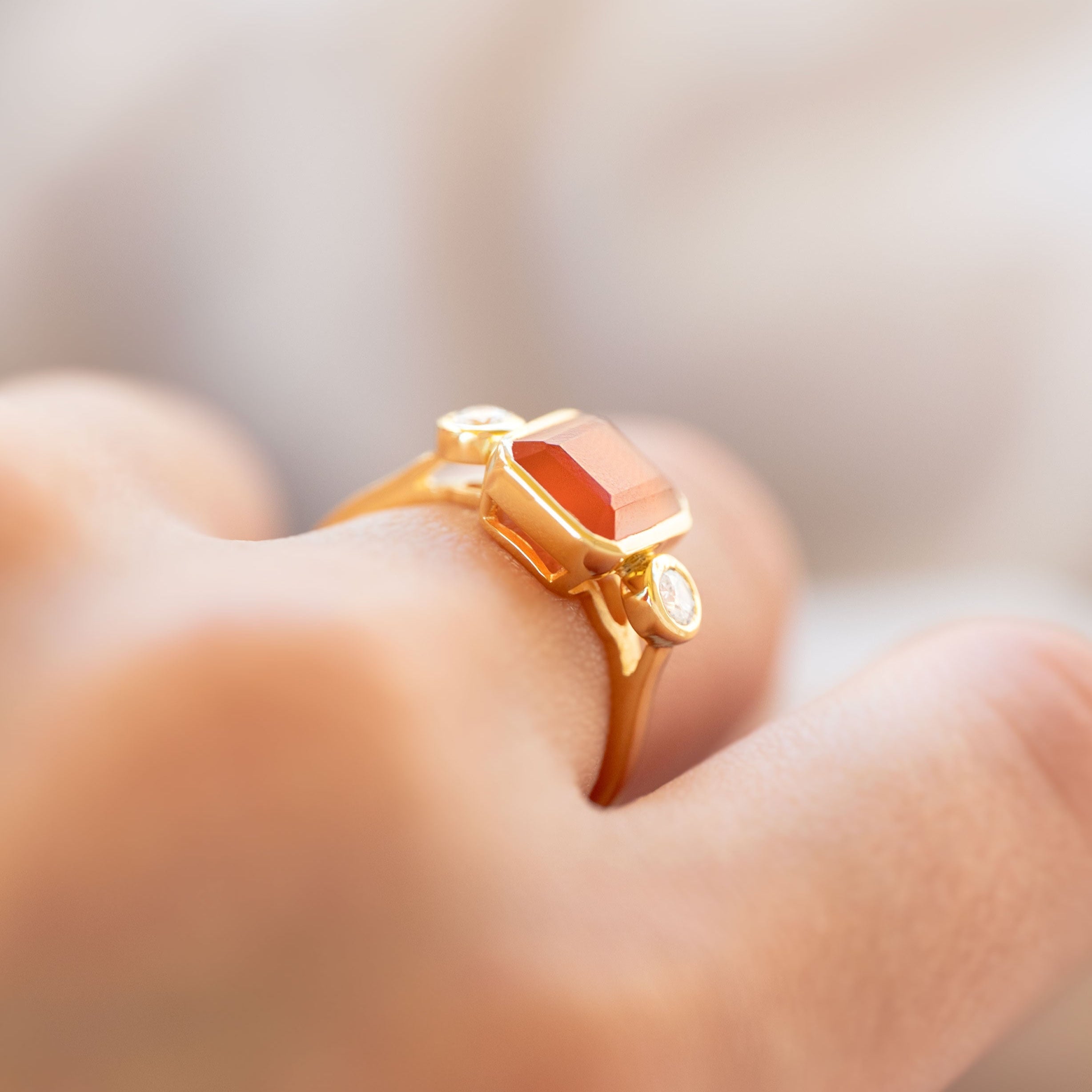
Why Moissanites? Why not lab or natural diamonds?
Two years ago, I had the opportunity to attend a gem trade show where I carpooled with a polished and soft-spoken older gentleman named James, who had recently retired as a diamond grader. You know how when you meet some older people, it just brings you a sense of happiness and makes you feel relaxed? You can't help but respect them, and that's exactly how I felt! So much knowledge and so much wisdom! As we were heading to the same trade show, we started discussing the industry and different colored gems, and eventually delved into the ongoing hot topic of lab-created versus natural diamonds. One thing that really stuck with me was when he said, "If I were you, I'd choose Moissanites, my love! A 9.25 out of 10 on the Mohs scale for gem hardness is quite impressive, and have you seen their sparkle?!" He asked me to check out Moissanites while I was at the show, and I sure did.
Until that moment, I had never truly considered Moissanites or given them the attention they deserved. I used to think, "If we need to use Moissanites, why not just opt for high-grade zircons? They look similar and are much cheaper!" However, I now realize I was wrong.
Coming from someone who has spent his entire career in the industry, I felt there had to be some truth to his recommendation. In the next few years, I continued to research, read, and talk to industry experts, as well as my gem dealers. For you, if the research is overwhelming, it may be easier to simply watch a documentary on Netflix - 'Nothing Lasts Forever.'
SO, WHY MOISSANITES AND NOT NATURAL AND LAB DIAMONDS?
Moissanites have several advantages over both natural and lab-made diamonds, but their durability and hardness are the primary factors that qualify them as suitable options for wedding or engagement rings. Here are a few reasons why someone might choose moissanite:
- Affordability: Moissanites are generally 70-90% less expensive than natural diamonds and often cheaper than lab-made diamonds.
- Brilliance: Moissanite has a higher refractive index than diamonds, giving it exceptional sparkle and fire.
- Durability: Moissanite is very hard (9.25 on the MOHS scale), making it suitable for everyday wear. MOHS is gemstone hardness scale.
- Eco-friendliness: Moissanite is created through a sustainable process, unlike natural diamond mining.
- Conflict-free: Moissanite's origins are well-documented, providing peace of mind.
Plus, Moissanites come with GRA certification, providing detailed information about each gem, including carat weight, shape, and more. Moissanites paired with a sturdy silver band are exactly what my customers love. Even if you’re not proposing with a Moissanite ring, it can make an excellent promise ring or a travel ring that you won’t have to worry about hiding or losing. Another significant benefit is that you don’t need to settle for a smaller 0.5-carat diamond for larger fingers; you can easily find a 2 or 3 -carat Moissanite ring set on a silver band for under $300.
Ultimately, the choice between moissanite, natural diamonds, and lab-made diamonds depends on personal preferences, budget, and values. Moissanites are still an emerging market and are not as popular as natural and lab-created gemstones.
Here are some more cool facts about Moissanite:
- Composition: Moissanite is made of silicon carbide (SiC), a naturally occurring mineral that was first discovered in a meteorite in 1893.
- Created in a lab: While moissanite does occur naturally, the moissanite used in jewelry is created through a controlled process that replicates the natural conditions under which moissanite forms.
- Discovered by Henri Moissan: The mineral was named after French scientist Henri Moissan, who first discovered it.
- Rarity in nature: Natural moissanite is extremely rare, which is why the lab-created version is used in jewelry.
- Colorless and color options: Moissanite is available in colorless (D-F) and near-colorless grades, as well as in various colors like gray, green, and black.
- Certification: Moissanite is often certified by organizations like the Gemological Institute of America (GIA), or the International Gemological Institute (IGI).
- Resale value: Moissanite generally doesn't retain its value like natural diamonds do, but its affordability and durability make it a popular choice for many buyers.
These facts highlight moissanite's unique characteristics and benefits.
Most Moissanites set in Sterling silver are often offered with GRA certification for its affordability, whereas if the GEM is set in
GRA (Gemological Research Association) certification is a document that verifies the authenticity and quality of a gemstone, often moissanite or lab-created diamonds. The GRA is a lab that tests and certifies gemstones based on their characteristics, such as:
- Authenticity: Verifying the gemstone is moissanite or lab-created diamond.
- Quality: Evaluating the gemstone's cut, color, clarity, and carat weight.
- Inscription: Some GRA-certified gemstones are inscribed with a unique identifier.
Why Do Certain Moissanites Come with GRA Certification Instead of GIA or IGI Certification?
GRA certification assures buyers about the gemstone's identity and quality, instilling confidence in their purchase. It's important to note, however, that GRA certification may not hold the same prestige as certifications from more renowned organizations like the GIA (Gemological Institute of America). While GIA certification is considered superior, it also comes with a higher cost. For example, if you have a ring featuring a 3-5 carat fancy emerald cut set in solid gold, the price difference may justify getting a GIA certificate. However, for items priced under $300, a GRA certification is usually sufficient.
I spent the next few months researching, experimenting, and debating, and the more I learned, the more I was drawn to moissanite. Now, here we are with our very first collection of classic pieces that will never go out of style—modern and very sturdy! I bet James would be very proud!
Click to explore our Moissanite collection HERE
WRITTEN BY KRISH



Leave a comment
This site is protected by hCaptcha and the hCaptcha Privacy Policy and Terms of Service apply.